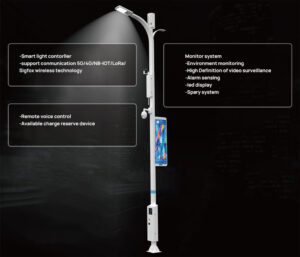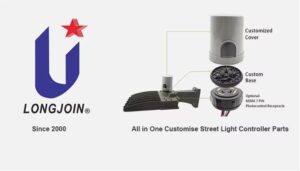Best Photocell Light Sensor for Outdoor Lighting
Introduction
In the realm of outdoor lighting, selecting the best photocell sensor is paramount for achieving optimal performance and energy efficiency. These sensors serve as the backbone of automated lighting systems, regulating when outdoor lights turn on and off based on ambient light levels.
The lighting industry continually evolves with advancements in technology and innovation, offering a plethora of photocell sensor options tailored to various outdoor lighting applications. From dusk-to-dawn sensors to motion-activated variants, the choices can be overwhelming.
In this guide, we’ll navigate through the landscape of photocell sensors for outdoor lighting, highlighting key features, considerations, and recommendations. Whether you’re illuminating pathways, parking lots, or building exteriors, understanding the nuances of photocell sensors will empower you to make informed decisions and enhance your outdoor lighting solutions.
Understanding Photocell Sensors

Photocell sensors, also known as photoresistors or light-dependent resistors (LDRs), are electronic components that exhibit a change in resistance based on the intensity of incident light. They are typically made of semiconductor materials such as cadmium sulfide (CdS) or cadmium selenide (CdSe). These materials have a property known as photoconductivity, where their electrical conductivity increases when exposed to light.
Photocell sensors operate on the principle of the photoconductive effect. When light falls on the semiconductor material within the sensor, photons excite electrons from the valence band to the conduction band, creating electron-hole pairs. This process reduces the resistance of the semiconductor material, allowing more current to flow through the sensor.
The amount of current flowing through the sensor is directly proportional to the intensity of the incident light. As light levels decrease, the number of electron-hole pairs decreases, leading to an increase in resistance. Conversely, when light levels increase, the resistance decreases due to the higher number of electron-hole pairs.
What is the Role of Photocell Sensors In Outdoor Lighting Systems?

The operational mechanism of photocell sensors revolves around their ability to convert light energy into electrical signals, thereby enabling the adjustment of lighting conditions in response to environmental changes. Typically integrated into outdoor luminaires or lighting control systems, photocell sensors utilize a combination of semiconductor materials and circuitry to achieve this functionality.
Upon installation, photocell sensors continuously monitor the surrounding light levels. As natural light diminishes during evening hours, the resistance of the sensor increases proportionally to the reduction in incident light intensity. This change triggers the activation of the connected lighting fixtures, ensuring adequate illumination in outdoor environments. Conversely, with the onset of daylight, the increase in ambient light prompts a corresponding decrease in sensor resistance, signaling the lights to deactivate and conserve energy.
Significance in Outdoor Lighting Systems
The integration of photocell sensors holds significant implications for outdoor lighting systems within the lighting industry, primarily revolving around efficiency, reliability, and sustainability.
Efficiency: Photocell sensors streamline the operation of outdoor lighting by automating the on/off control based on ambient light conditions. This eliminates the need for manual intervention, optimizing energy usage and enhancing overall system efficiency.
Reliability: By leveraging photocell sensors, outdoor lighting systems can achieve consistent performance in varying environmental conditions. The sensors’ ability to accurately detect changes in light levels ensures reliable operation, mitigating the risk of under- or over-illumination.
Sustainability: The adoption of photocell sensors aligns with sustainability objectives within the lighting industry. By reducing unnecessary energy consumption through intelligent light control, these sensors contribute to energy conservation and carbon footprint reduction efforts.
Advancements in photocell sensor technology have led to the development of enhanced functionalities and applications within outdoor lighting systems. Modern sensors incorporate features such as programmable sensitivity levels, adaptive control algorithms, and wireless connectivity, enabling seamless integration with smart lighting platforms and IoT (Internet of Things) ecosystems.
Furthermore, photocell sensors find applications beyond traditional outdoor lighting, including in architectural illumination, roadways, industrial facilities, and residential settings. Their versatility and reliability make them indispensable components in modern lighting infrastructure, facilitating optimized performance and user experience.
Factors to Consider When Choosing a Photocell Sensor
There are several factors you should consider before purchasing a photocell sensor. Some of which include:
Light Sensitivity
Light sensitivity, measured in lux, determines the threshold at which the sensor activates or deactivates the lighting system. Understanding the ambient light conditions of the installation site is crucial for selecting the appropriate sensitivity level. Lower sensitivity sensors are ideal for high ambient light environments, while higher sensitivity sensors are suitable for dimly lit areas.
Environmental Conditions
Outdoor lighting fixtures are exposed to harsh environmental elements such as moisture, temperature fluctuations, and UV radiation. Opt for photocell sensors with robust construction and IP-rated enclosures to ensure durability and reliability in adverse weather conditions. Additionally, consider models with surge protection to safeguard against electrical transients.
Compatibility
Ensure compatibility between the photocell sensor and the lighting control system, including voltage requirements and communication protocols. Verify compatibility with the specific lighting technology used, such as LED, fluorescent, or HID lamps. Additionally, consider interoperability with smart lighting platforms for advanced control and automation features.
Adjustability
Advanced photocell sensors offer configurable settings to fine-tune performance according to specific requirements. Parameters such as sensitivity, time delay, and daylight harvesting capabilities can be adjusted to optimize energy efficiency and lighting performance. Look for sensors with programmable options or remote adjustment capabilities for enhanced flexibility.
Cost
Evaluate the total cost of ownership, considering not only the initial purchase price but also factors such as maintenance, longevity, and energy savings. While high-quality sensors may have a higher upfront cost, they can deliver superior reliability and performance over their lifespan, resulting in long-term cost savings.
Photocell Sereis Certification
Lastly, consider the certifications like the UL and CE certifications. It adds credibility to the photocell sensor and reassures you that it meets stringent safety and quality standards. It also simplifies the process of regulatory compliance and demonstrates the manufacturer’s commitment to producing reliable and safe products.
What Are the Best Photocell Sensors For Outdoor Lighting?
When it comes to finding the best photocell sensor for outdoor lighting in the lighting industry, it’s all about finding the right balance of reliability, sensitivity, compatibility, adjustability, and brand reputation to meet your specific needs. With that in mind, here are some of the best photocell sensors:
ORRGENA 2-Pack, Dusk to Dawn/Day Night Sensor, Photoelectric Switch, Photo Cell Sensor

The ORRGENA photocell sensor switch offers automatic dusk-to-dawn lighting, versatile compatibility with various bulb types, and durable construction. Its easy installation and reliable customer support make it a top choice for outdoor lighting needs. With UL listing, surge protection, and a 3-year warranty, it ensures safety and reliability for diverse applications.
Omnidirectional sensitively Design JL-214B 220V Photocell Sensor Switch

The Omnidirectional Photocell Sensor JL-214B excels with its versatile control of outdoor lighting, featuring a preset time-delay to prevent redundancy and a surge arrester for added safety. Its compliance with CE (UKCA) and RoHS directives, along with twist-lock terminals meeting BS5972 standards, ensures easy installation and maintenance. With advanced features and reliable performance, it’s a top choice for efficient and effective outdoor lighting control.
Woods 59408WD Outdoor Hard-Wired Post Eye Light Control with Photocell Light Sensor

The Woods 59408WD Outdoor Hard-Wired Post Eye Light Control is a top-tier photocell sensor. It enhances home safety by automating outdoor lights, preventing flickers, and adapting to ambient light levels. Its durable, weather-proof design and compatibility with various bulb types make it a standout choice for reliable and convenient outdoor lighting control, ensuring your property’s peace of mind and security.
JL-224BK Photocell Light Sensor Omnidirectional Face-top Sensor

The JL-224BK Photocell Light Sensor excels with reliable performance, versatile applications, and enhanced functionality. Its omni-directional face-top sensor ensures comprehensive coverage, while a preset time-delay function prevents misoperation. Compliant with CE and RoHS directives, it offers easy installation with twist lock terminals. Ideal for European markets, it’s a top choice for precise outdoor lighting control in various settings.
GBAYSA Outdoor Photoelectric Sensor

The GBAYSA Outdoor Photoelectric Sensor comes with with automatic dusk-to-dawn operation, a durable waterproof design, and an adjustable swivel mount for precise lighting direction. Its easy installation and compatibility with various bulbs make it user-friendly. The precision time delay function prevents false triggers, ensuring reliable performance in diverse outdoor settings. Overall, it’s a top choice for efficient and reliable outdoor lighting control.
Conclusion
Picking the perfect photocell sensor for outdoor lighting boils down to a few key factors. Look for sensors with reliable UL and CE certifications – these stamps of approval ensure top-notch quality and safety. Additionally, consider crucial specifications such as sensitivity range, response time, and weather resistance. By focusing on these factors, you’ll be well-equipped to select the ideal photocell sensor for your outdoor lighting needs.







